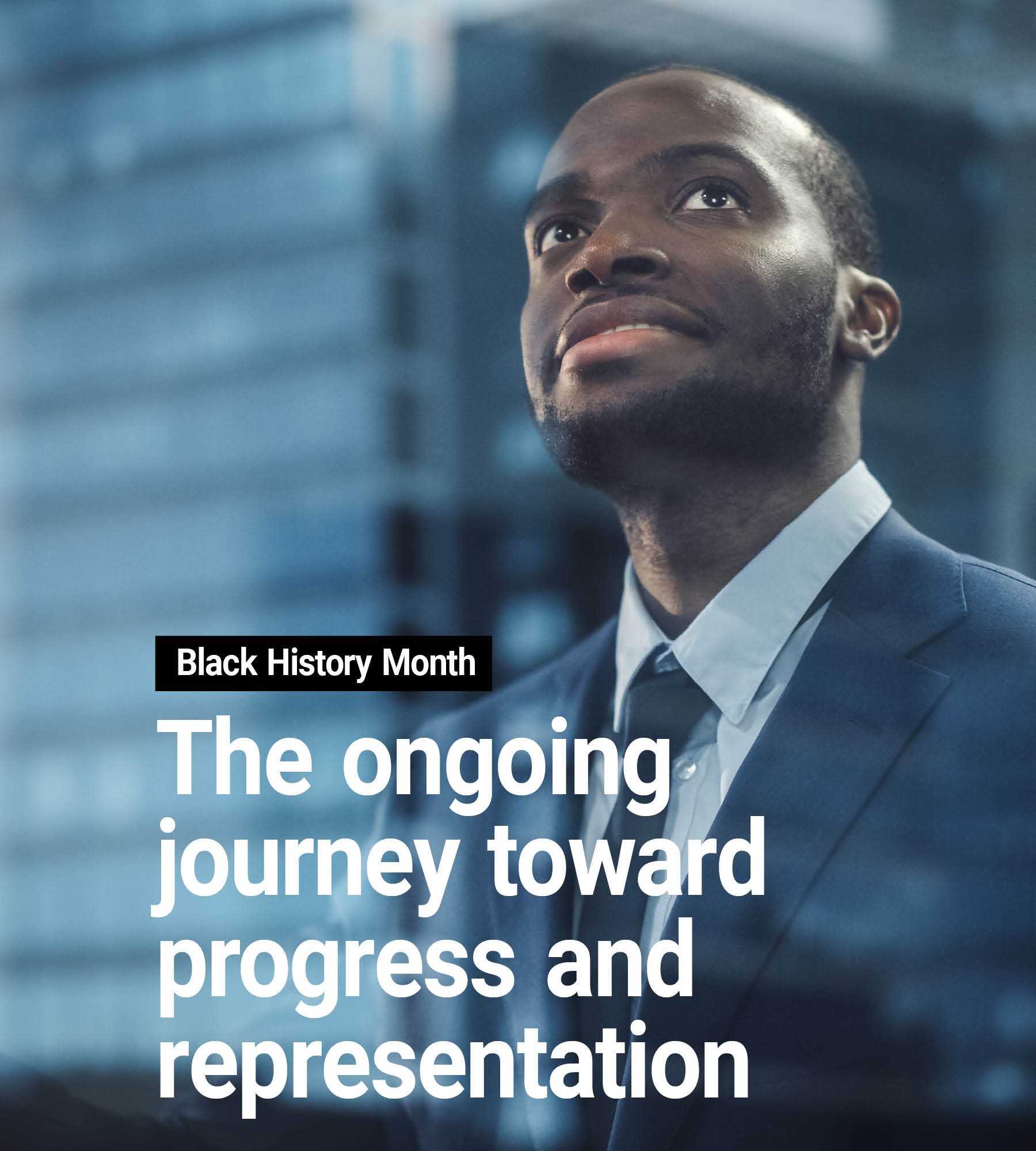Language
You can read the magazine in one of the following languages
Geolocation
You can read the global content or the content from your region

Over the years, we’ve seen positive shifts in diversity, equity and inclusion (DEI) efforts, particularly within the public sector, which has long been a leader in pushing social value initiatives and advancing DEI within employment.
However, despite the sector’s significant progress in achieving ethnic diversity across a broad spectrum of roles, challenges remain at the highest levels of leadership.
One of the critical areas where we need to see more progress is in the representation of Black professionals in senior leadership within the public sector. While there is an equal spread of ethnic diversity across entry and mid-level positions, Black employees are still underrepresented in the most senior positions, including C-suite roles and boardrooms in public service organizations.
Recent reporting by The Office for National Statistics found that, despite increased diversity in the workforce, the glass ceiling still remains firmly in place for Black and ethnic minority professionals at the top levels.
The presence of Black role models in senior public sector leadership is essential – not only for inspiring the next generation but for creating environments where diverse perspectives are incorporated into decision-making. Representation matters. This is not just about optics; diverse leadership brings tangible benefits to how public sector organizations serve their communities.

When Black professionals are visible in leadership, it signals to younger employees and future leaders that success is attainable and that pathways to leadership are open.
When Black professionals are visible in leadership, it signals to younger employees and future leaders that success is attainable and that pathways to leadership are open. It helps dismantle barriers and challenges the status quo that too often limits opportunities for Black professionals to rise through the ranks.
The responsibility to create meaningful change cannot rest solely on Black professionals working to break the glass ceiling; it is the responsibility of everyone within public service organizations to actively cultivate and support Black talent. This means engaging at all levels and ensuring that DEI is deeply embedded into the culture and strategy of every public sector institution.
The public sector has led the way in social value initiatives, but true equity requires going beyond these efforts and addressing the lack of Black representation at senior levels. The first step is authentic listening and understanding – leaders must hear the stories of Black employees and understand the specific challenges they face.
Once we understand these barriers, we can begin creating cultures of active allyship, where everyone is responsible for calling out inequitable behaviors and championing Black talent.
What gets measured gets done, and public sector organizations must create clear, transparent pathways for advancement to ensure that Black professionals have equal access to leadership opportunities.
This involves implementing fair and transparent promotion criteria, offering leadership development programs and ensuring Black employees are represented in succession planning discussions. Mentorship and sponsorship programs are also critical, but they should not be limited to career advice.
Senior leaders need to actively advocate for Black professionals within their organizations, pushing for their growth and ensuring they are considered for leadership roles. Sponsorship, in particular, can be a powerful tool for driving advancement by ensuring that Black employees have the backing of influential allies within the organization.

Success must be determined not by race, but by talent, passion and opportunity.
Ultimately, sustaining momentum in DEI efforts requires public sector leadership to remain committed to fostering inclusivity and representation at all levels. The progress we’ve seen is encouraging, but it must be embedded as a core element of public sector culture. The work cannot be limited to awareness campaigns or reports; it needs to be a long-term commitment to change.
The journey toward true diversity, equity and inclusion within the public sector is ongoing and requires continued dedication from leadership, employees and communities alike. The progress made so far is encouraging, but the glass ceiling for Black professionals in senior roles remains unbroken.
Now is the time to push forward, ensuring that representation at the top of public service reflects the diverse communities it serves. Success must be determined not by race, but by talent, passion and opportunity.

Gita Singham-Willis
Contributor Collective Member
Gita Singham-Willis is a strategic business and technology transformation and change leader and DEI advocate, experienced in digital, technology and service transformation. She has an in-depth understanding of balancing business strategy objectives with user-centered design, and how to align people when implementing change. As a Founding Partner at Cadence Innova – a public service transformation consultancy – Gita is passionate about leading complex, multifaceted programs with a people-centered approach to leverage new digital technologies to enable sustainable change to businesses, communities and people’s lives. For more information visit https://www.linkedin.com/in/gitas